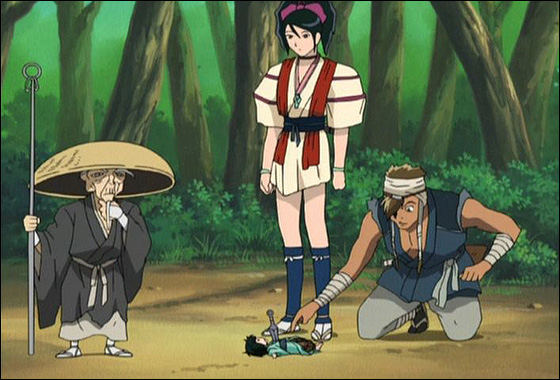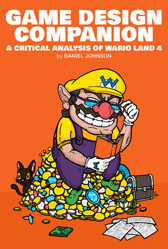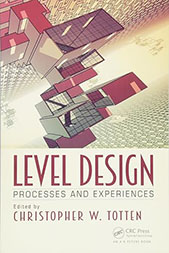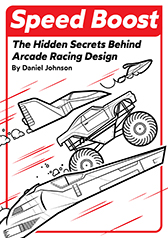Ninja Scroll: The Series Impressions
May 9th, 2010

What I’ve come to appreciate through watching Ninja Scroll: The Series is the expertise of Yoshiaki Kawajiri and Yutaka Minowa, the director and artist of the original Ninja Scroll (1993). Yoshiaki Kawajiri has directed some of my favourite anime productions including the Vampire Hunter D remake Bloodlust, the TV series for X and the neo-noir sex thriller Wicked City. Yutaka Minowa also worked on Vampire Hunter D: Bloodlust and Wicked City, as well as the X movie adaption and the Hellsing-esque Devil May Cry animated series. Despite taking on different roles, the duo share an accommodating sense of style where Yoshiaki Kawajiri’s dark, mistrusting worlds lends themselves to Yutaka Minowa’s diagonally-drawn, pointy-chinned character designs.
Ninja Scroll and Wicked City, two of my favourite titles that Kawajiri and Minowa worked on together, are such interesting movies because their characters sought out their own motives questionable to their roles as heros and villains. Dakuan and Jubei, for instance, may be fighting on the same side, but only because Dakuan poisoned Jubei and baited him with an antidote to lure him into following orders. These characters disobey their hero and antagonist roles to protect their own interests and undermine the viewer, creating sinister worlds filled with only the guilty.
http://www.youtube.com/watch?v=Bt-_MbeDrcY
I rant about Kawajiri and Minowa to set the contrast for Ninja Scroll: The Series which, for all intents and purposes, dumbs the movie’s serious tone down to something akin to a Saturday morning cartoon.
Ninja Scroll: The Series is set in an unrelated, alternative dimension to the movie. Jubei and Dakuan reprise their roles, but meet as strangers with no prior history. Included in the cast are two new protagonists, Shigure and Tsubute who set the kid-friendly tone. Shigure is a young “ninja girl” looking for meaning and strength in her life—a representation of a child entering adulthood. She’s quite a good character compared to the other performances and bears more than a passing resemblance to Momiji from Ninja Gaiden Dragon Sword. Tsubute, on the other hand, is an anime archetype: the young rascal with a tendency to flair up. He naturally provides the comic relief and is voiced by Scott Menville who often plays these sorts of roles.
The premise of the story is very simple. The lone traveler, Jubei, on an elder’s dying wish, is given the mystical dragon stone and told to deliver it to the light maiden Shigure. He soon finds Shigure in an isolated mountainous village and hands her the stone. The stone is seemingly a pendant of misfortune as Shigure’s village is attacked shortly after Jubei hands her the stone. The attackers, from various ninja clans, are in pursuit of the stone, so she flees the village, soon running back into Jubei, accompanied by Dakuan who seems to take pleasure in pestering Jubei. Later Tsubute joins the party and the stone is split in two. The foursome hold on to one half, but lose the other to the Hiruko Clan. The rest of the story follows the merry band’s pursuit to find the other half of the stone while protecting their own from various ninja clans.
Since different clans are doggedly after the dragon stone (for reasons unclear), the majority of the 13 episodes focus on the group defending the stone from various mutant ninja beasts. As such, each episode has largely the same self-contained structure of introducing a new handful of new ninja mutants and concluding with their defeat at the hands of Jubei. It’s a little formulaic, but a reliable template nonetheless.
As you’ve likely gathered from my explanation, there’s little backstory to flesh out why everyone is after this supposedly mystical stone. Each episode just pulls a new slew of derivative, mish-mash villain archetypes who are unflinching in their rage against Jubei. It’s all just pretty mindless really. Because each episode introduces a fresh bevy of goons before quickly removing them from existence, they become disposable fodder in the thirteen episode rotation.
Although the protagonists tend to have some form of dimension to them, the villains are generically churned out, diluting the sinister essence ingrained in the original cast of villains. The introduction scenes for Yoshiaki Kawajiri’s vibrant cast of villains would always give you goosebumps because of their selfish motives and interesting character designs. Here, they’re just random freaks with no texture or detail, spurting “I’m going to kill you, bastard!” lines. It all plays out similarly to a Saturday morning cartoon, creating a disconnect between the adult nature of the content and cartoon presentation.

Several of the villains are unclothed or are designed in sexually suggestive ways, and the majority end up spliced in half, decapitated or stabbed by Jubei’s blade (as much as he prefers pacifism). Throw in a couple of sex scenes, innuendo, tame eroticism and references to S&M culture and it quickly grows into something uncomfortable and uncanny. By appearance, Ninja Scroll: The Series looks like a kids show, yet it contains all of this adult content. Despite being set in feudal Japan, all the characters speak in an unrestrained modern vernacular too.
Through all the slicing and dicing, the relations between the group of protagonists strengthens and the characters do evolve a little which add a layer or two to a fairly vanilla cast. The ninja girl matures into her adult role, the prankster kid learns to be responsible, Dakuan softens up and even though Jubei’s story ends where it began (with him looking for a place to sleep), he gains a little optimism through the whole affair.
There’s a few strange quirks which are difficult to avoid mentioning. The number of key frames in the battle sequences tends to pick up in the final few episodes, leaving the earlier episodes feeling rough and the level of quality throughout uneven. Dakuan’s cells are basic and ugly to look at in comparison to Shigure who seems to glow with an added radiance. In fact, Dakuan’s role overall is strangely played down. He’s completely overshadowed by the younger protagonists and is more of a pest than anything. Even Jubei is kind of overshadowed too. He doesn’t say much and only becomes interesting when he’s slicing heads.
Taking it for the screwed up kids cartoon it is, Ninja Scroll: The Series isn’t so bad. I partly enjoyed this shallower tale, even though I wouldn’t recommend it. It’s worth adding that there’s a substantial amount of extras on the DVDs (interviews, sketches, time lapse drawings for the cover art for each DVD) and usually 4 or 5 episodes per disc, so you won’t feel entirely ripped off. Still, this series doesn’t deserve mention against the work of art that is Yoshiaki Kawajiri and Yutaka Minowa’s original Ninja Scroll. If you haven’t seen that movie, then go rent it out now, otherwise just avoid this mess.
“Leaving The Country” Message #2
May 6th, 2010
Despite sitting on a pile of completed, polished articles, I haven’t posted anything new here, aside from the previous post, for 2 weeks and that does kinda cut me up. This is all tied to my working overseas and because of it there’s going to be a major shake-up here, so allow me to explain.
Come the 11th, I will be leaving Australia to work in China, which means that I will have less time to spend on games and writing, particularly as I spend the first 2 months settling back in. I have therefore prepared a healthy stash of content which will be automatically uploaded to the site for as long as I can maintain it (I’m still writing and editing before I go). However, the majority of this content probably won’t be about games, but instead other media which I’ve been trying to clear off before my departure.
You see, DanielPrimed has been “harmonised” by the Chinese Communist Party’s firewall, which means that for some ungodly reason I will not be able to easily access my blog in mainland China. There are measures around this which I will try to capitalise on, however, it’s by no means a sure chance that I’ll be able to overcome the flaming wall. Because of the potential limitations in accessing my blog, I applied for—and was subsequently accepted into—an editorialist position at Kombo.com which will likely house the majority of my games writing in the near future, at least. I decided to chase up this position not just because of the firewall, but because I feel that the position will suit my new life overseas and my overall attitude towards games writing and the distribution of information.
I’ll be frank and say that I feel at ends with most of the intelligent weblog discussion on video games. Contemporary and falsely-defined “games criticism”, which avoids discussion of game design itself in lieu of surface-level commentary on issues surrounding—but rarely a part of—game design, is involuntarily asserting games as objects of low culture and that really irks me. I spend a decent amount of time and energy thinking about the ways games are constructed and I figure that it’s better to use this energy to contribute to the current state of wider video game conversation than a niche of people who I don’t always feel best represent analytical games writing. I don’t intend to condemn these people because the majority are great writers who dig up interesting subject matter and articulate themselves well; it’s just that we have different views on how to write about games and I don’t feel comfortable being a part of that space.
Writing for Kombo will allow me to reach a larger audience of people who are generally unaware of alternative forms of games writing and that’s pretty important. Of course, if you’ve read this website for some time, then you’ll know how I feel about the enthusiast press, and much of this stands true of Kombo. Fortunately, I’ve been familiar with this site for many years (since it was formerly Gamecube-Advanced) and I understand their continual desire to improve their editorial work which I admire and would like to contribute to. The writing load is also much less intense than my 2-day regime here and, of course, I avoid the firewall and still get maintain my way of writing.
I’m not sure what exactly this will mean for DanielPrimed, but I don’t think that there’s much need to worry. I will continue to post updates here on the articles I write for other sources, so really, nothing much will change bar the necessary slowing of content. I’m not exactly sure when my articles will go up on Kombo—they’ve been taking ages to set me up, maybe it won’t even happen at this rate!—but I will likely begin with a slew of Heavy Rain material which I am very pleased with. In anycase, I’ve set everything up for DanielPrimed to automatically update while I settle in overseas (going to visit friends before I move into an apartment), so—if I can jump to firewall to access it—follow Twitter and I’ll try to keep you updated on my new life overseas.
Enjoyable for all Audiences: Klonoa and House of the Dead: Overkill
April 29th, 2010

This is something of a special take on my regular ‘Play Impressions‘ feature. Klonoa and House of the Dead: Overkill, despite their differences in content, are great examples of games which channel the ethos that the Wii was founded on: accessible gameplay that breaks down the barriers between beginner and seasoned players. Both of these titles are of genres of relatively low complexity which further adds to their expansive appeal. I will focus on how their designs are logical to players and ultimately very successful games.
Klonoa
Klonoa is a remake of the 2.5D PSone platformer Klonoa: Door to Phantomile for Wii. The platforming borrows mechanics from Yoshi’s Island and Wario Land, but alters and combines them in a refreshing way. Like Yoshi, Klonoa has a flutter move where he can temporarily keep himself afloat in mid-air and like Wario, Klonoa can pick up enemies and launch off them to gain extra height. When these mechanics are combined in succession, Klonoa comes into its own, offering an emergent technique for more capable players which allows Klonoa to travel great horizontal and vertical distances without touching the ground.
Klonoa can also toss enemies in front of him or at objects in the back and fore grounds, allowing for some nifty puzzles. In fact, I’ve never played a game which has so dynamically implemented 3D environments on a 2D plane. It’s all quite impressive the way paths spiral around and Klonoa shifts to layers which were previously a part of the back/fore ground. As with the combination of jumping mechanics, it’s when the backgrounds and foregrounds interconnect and loop around to create multilayered puzzles where Klonoa excels.
It’s the bridging of separate, easy-to-understand constituents which make Klonoa a joy to play for experienced and inexperienced players. In fact, Klonoa is an ideal game for children; I would have loved to play his game growing up. The story in particular deserves special mention in this regard. Unlike Jak and Daxter or Rachet and Clank who play on youthful, adventure-seeking archetypes, Klonoa and his blue-ball sidekick Huepo are adventurous but reserved, displaying a natural pure-heartedness rarely seen in video games. The sense of friendship shared between the two is heartfelt and the conclusion to their tale is one of the most touching I’ve experienced a video game—less we forget this is a production made for children. Playing Klonoa had reminded me of the importance of developing games for a young audience. However, even if you’ve long since past primary school, as a fan of 2D platformers, I can’t recommend this under-appreciated gem enough. The best platformer on the Wii bar Mario.
House of the Dead: Overkill
There is surprisingly very little to say about House of the Head: Overkill from a mechanical standpoint. As I mentioned in my rail shooter guide on Racketboy, Overkill employs a simple combo system where flawless, no-miss kills tally a tiered combo system with each multiplier assigned to over-the-top names like like ‘psychotic’ and ‘goregasm’. Shots are divided into head shots and body shots.
Players can now choose a two weapon loadout prior to each mission, supported by a shop system where players can tweak and add weapons to their arsenal. In many respects, the two weapon loadout—arguably the only “new” addition to this installment, if you’re into series progression and all—injects a strategic dynamic into the core gameplay since players can switch weapons to conserve ammo or for tactical efficiency. There’s a degree of strategy in pairing up clunky, rapid-fire or standard weapons depending on your strengths. It quickly becomes apparent though that the shotgun, with its wider target area—as represented by the large reticle—awesome power and lack of ineffectiveness when shot into the distance, is the most efficient weapon for high score chasing, and once you’ve maxed it out, you’ll almost never use the other weapons. Personally, I’m hardly a high score chaser, but the scoring system in Overkill, due to it’s simplicity and prevelance in the UI, is more apparent than in prior games, which piqued my interest. High scores are rewarded with cash, so it all ties back to the upgrades system which is scrimpy at best, ensuring that you’ll need to play every level at least 3 times before you earn enough dough to max out all the weapons.
The player also has a substantial health bar which on depletion offers the option of sacrificing half your score to continue. Branching paths have been removed entirely which give more focus to the narrative—and with plenty of health packs, slow motion prompts, grenades and ‘save the civilian’ moments, Overkill is quick to orientate the players concentration towards accurate shooting and the rewards subsequently accumulated from the combo system. The novel grindhouse presentation may appear to distract from possible lacking amenities, but this couldn’t be further from the truth. All components of House of the Dead: Overkill: the linear progression, health bar, cash system, in-game trinkets, UI, all work to consolidate accurate shooting: the game’s core gameplay premise. In addition to the excellent production values and comedy-driven narrative (the latter of which, I think anyone could enjoy), Overkill, just like Klonoa, is a fantastic game for both seasoned and new players alike. I think that it’d also be a good introductory game for players wanting to further explore the rail shooter genre as it focuses so heavily on accurate shooting: an integral skill required in these games.
Overkill also provides incentive for players to keep working on their accuracy with a standard story mode, the option to add more mutants and a final “director’s cut” version which adds a significant amount of content per level. The final pay off is the ability to dual wield with too Wiimotes which is a rather handsome reward. Again, this plugs into the accuracy element of the game.
Additional Readings
The Making of the House of the Dead – British Gaming



 Game Design Companion: A Critical Analysis of Wario Land 4 - $7.99
Game Design Companion: A Critical Analysis of Wario Land 4 - $7.99 Level Design: Processes and Experiences
Level Design: Processes and Experiences Speed Boost: The Hidden Secrets Behind Arcade Racing Design - $5.99
Speed Boost: The Hidden Secrets Behind Arcade Racing Design - $5.99 Adventures in Games Analysis: Volume I - $5.99
Adventures in Games Analysis: Volume I - $5.99







